Mastering Google Directions Map Driving Directions for Small Business Efficiency
As a small business owner, I used to waste valuable time and resources navigating inefficient routes and battling traffic congestion. That was until I discovered the transformative power of Google Maps directions. This readily available, free tool has drastically reduced my travel time and streamlined my operations, allowing me to boost productivity and potentially enhance profitability. While Google Maps directions provide a solid foundation for route planning, the lack of automatic optimization requires some manual adjustments to truly maximize its benefits. This article will share effective strategies to plan efficient multi-stop routes, leverage advanced features, and understand the limitations of Google Maps directions. I’ll also explore alternative route planning solutions for businesses with more complex needs. By the end, you’ll be equipped with the knowledge to master Google Maps directions and take your small business efficiency to new heights.
Planning Efficient Multi-Stop Routes with Google Directions Map Driving Directions
Crafting well-planned multi-stop routes is the foundation for maximizing efficiency with Google Maps directions. Here’s a step-by-step guide to accurately inputting multiple destinations and optimizing your route sequence.
Step-by-Step Guide to Adding Multiple Stops
- Open Google Maps : Begin by launching the Google Maps app or website.

- Enter Your Starting Point : Type in your current location or the address of your first stop.
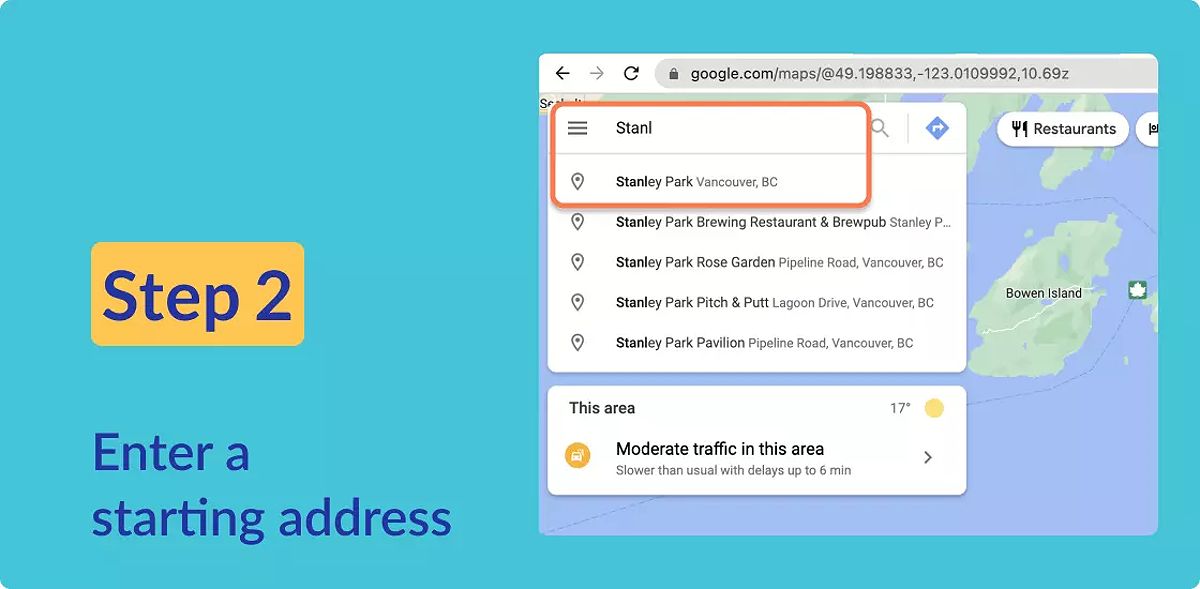
- Add Stops: Click on “Directions” and enter your first destination. To add more stops, click on the “+” icon. You can input up to 10 stops.
- Ensure Accurate Address Entry: Double-check that you’ve entered addresses correctly, including landmarks or cross-streets to avoid confusion.
Best Practices for Address Entry
Accurate address input is crucial for effective routing with Google Maps directions. Follow these best practices:
- Use Complete Addresses: Whenever possible, use full addresses to minimize ambiguity.
- Verify Addresses: Before adding stops, take a moment to confirm the accuracy of the addresses using online searches or Google Maps.
- Utilize Landmarks: If an address is unclear, incorporate nearby landmarks to help guide the route.
Troubleshooting Incomplete or Ambiguous Addresses
Occasionally, you may encounter incomplete or ambiguous addresses. In such cases, try these troubleshooting tips:
- Search by Business Name: If you only have the business name, search for it directly in Google Maps.
- Cross-Reference: Corroborate the address information with other mapping services or online directories.
Importance of Accurate Addresses
Entering even a slightly inaccurate address can lead to significant detours, wasting valuable time and fuel. This underscores the importance of double-checking every address before adding it to your route.
Optimizing Your Route Sequence for Maximum Efficiency
Once you’ve entered your stops, the next crucial step is to optimize the order in which you visit them. Google Maps directions do not automatically arrange the stops for efficiency, so manual optimization is necessary.
Manual Optimization Strategies
- Understand the Geography : Familiarize yourself with the locations of your stops. Visualize the map and identify logical clusters.
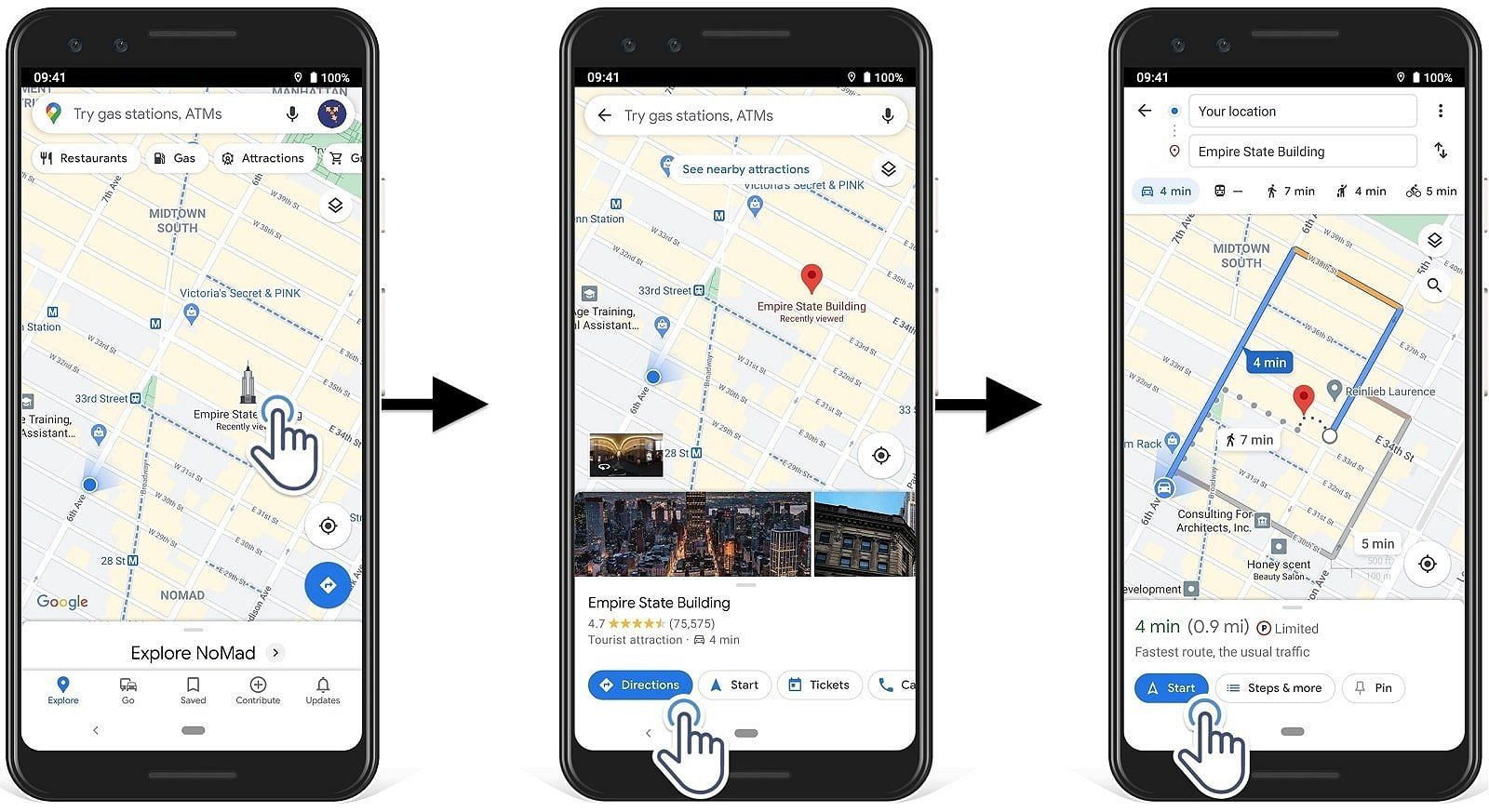
- Group Similar Stops: Try to group jobs that are geographically close to one another. This will minimize backtracking and reduce travel time.
- Evaluate Travel Times: Use Google Maps to estimate travel times between stops and adjust your route accordingly.
- Consider Traffic Patterns: While Google Maps provides real-time traffic updates, manually adjusting your route to avoid known congestion hotspots during peak hours can yield even greater time savings. For example, if your route includes a highway notorious for afternoon delays, rerouting through surface streets during rush hour could save you 30 minutes or more.
Visual Analysis for Efficient Routing
Leveraging the visual representation on Google Maps can assist you in identifying the most efficient route. Look for straight paths and avoid routes that require excessive turns or detours.
Examples of Rearranging Stops
For instance, if you have stops in three different neighborhoods, assess the best order to visit them. By rearranging stops based on proximity, you can significantly reduce your overall travel time. 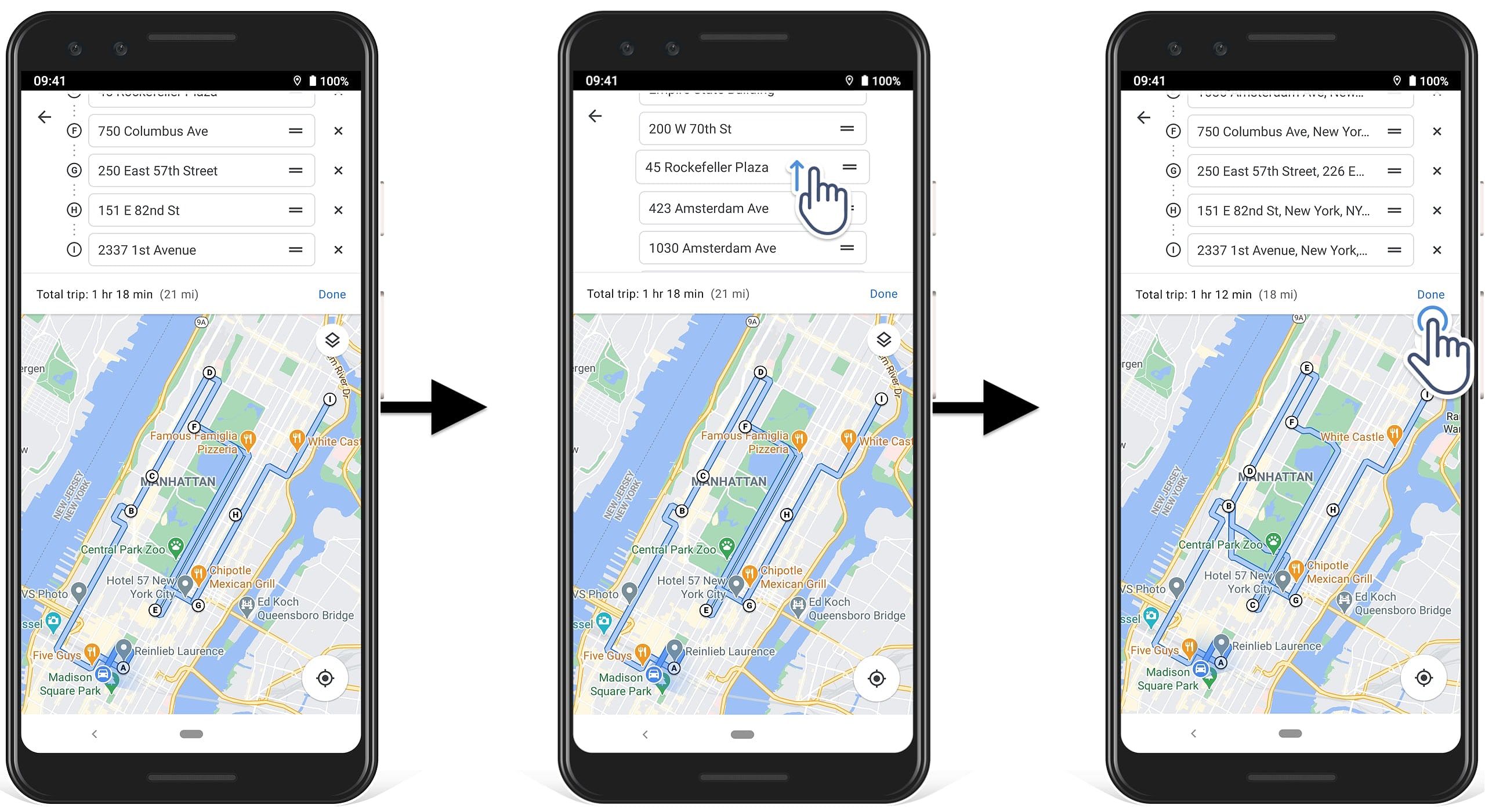
Leveraging Advanced Google Maps Features for Enhanced Efficiency
Google Maps offers several advanced features that can further enhance your efficiency beyond basic routing capabilities.
Street View for Job Site Previews
The Street View feature allows you to virtually explore locations before arriving, which can be particularly beneficial for field service technicians and contractors:
- Identify Access Issues: Use Street View to check for potential obstacles or access issues at job sites.
- Prepare for Unique Details: Familiarize yourself with the site layout to better prepare for the job.
Offline Maps for Remote Job Sites
In areas with limited internet connectivity, offline maps can be a lifesaver. Here’s how to use this feature effectively:
- Download Maps: Before heading out, download the maps for the areas you plan to visit.
- Access Without Internet : Ensure your team can navigate without relying on a mobile data connection, preventing disruptions.
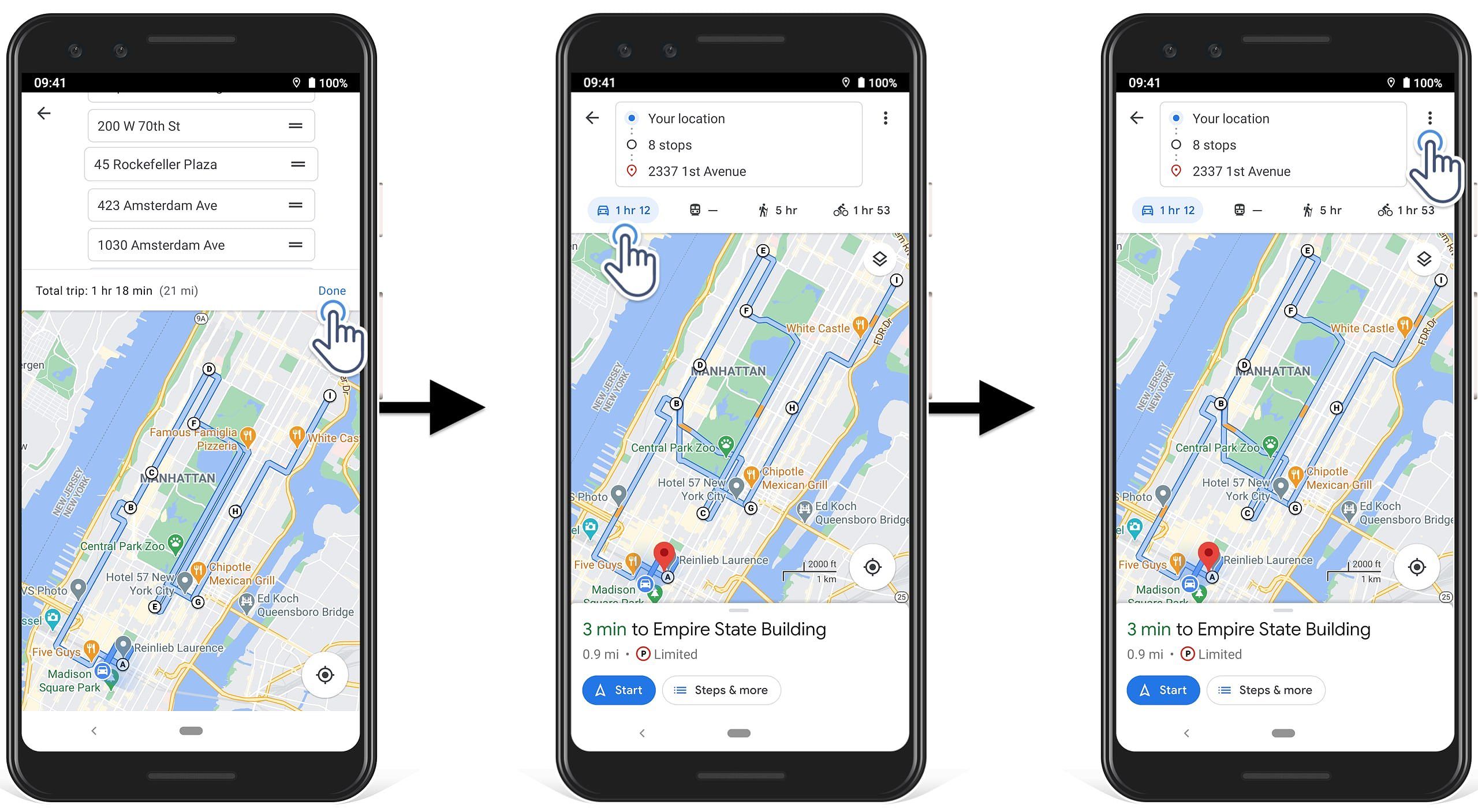
Sharing Routes with Employees or Clients
Google Maps makes it easy to share your planned routes:
- Improved Communication: Sharing routes ensures that everyone is on the same page, reducing confusion.
- Client Updates: Keep clients informed about your team’s progress and expected arrival times.
Understanding Google Maps Limitations and Exploring Alternatives
While Google Maps directions are a powerful tool for small businesses, it does have certain limitations, particularly the maximum of 10 stops per route.
The 10-Stop Limitation
For businesses with extensive daily routes or multiple jobs, the 10-stop limit can be a significant constraint. In such cases, it may be worth exploring alternative route planning software.
Scenarios Requiring Alternative Software
Consider using specialized routing software if you:
- Manage Large Fleets: Businesses with multiple vehicles may require more advanced features beyond what Google Maps can provide.
- Need Complex Routing: If your operations involve intricate delivery routes or numerous daily stops, alternative solutions can offer enhanced capabilities, such as automated route optimization.
Counterargument: Small Businesses with Minimal Routing Needs
For small businesses with only a few daily stops, the time investment required for manual optimization might outweigh the benefits. In such cases, the 10-stop limit of Google Maps directions may still be sufficient, and the cost of alternative software may not be justifiable.
Features of Alternative Route Planning Software
Dedicated routing applications often come with features that Google Maps lacks:
- Automatic Route Optimization: These tools can automatically arrange stops for maximum efficiency, considering factors like traffic patterns, time windows, and driver breaks.
- Real-Time Tracking : Monitor vehicle locations and adjust routes dynamically in response to changing conditions.
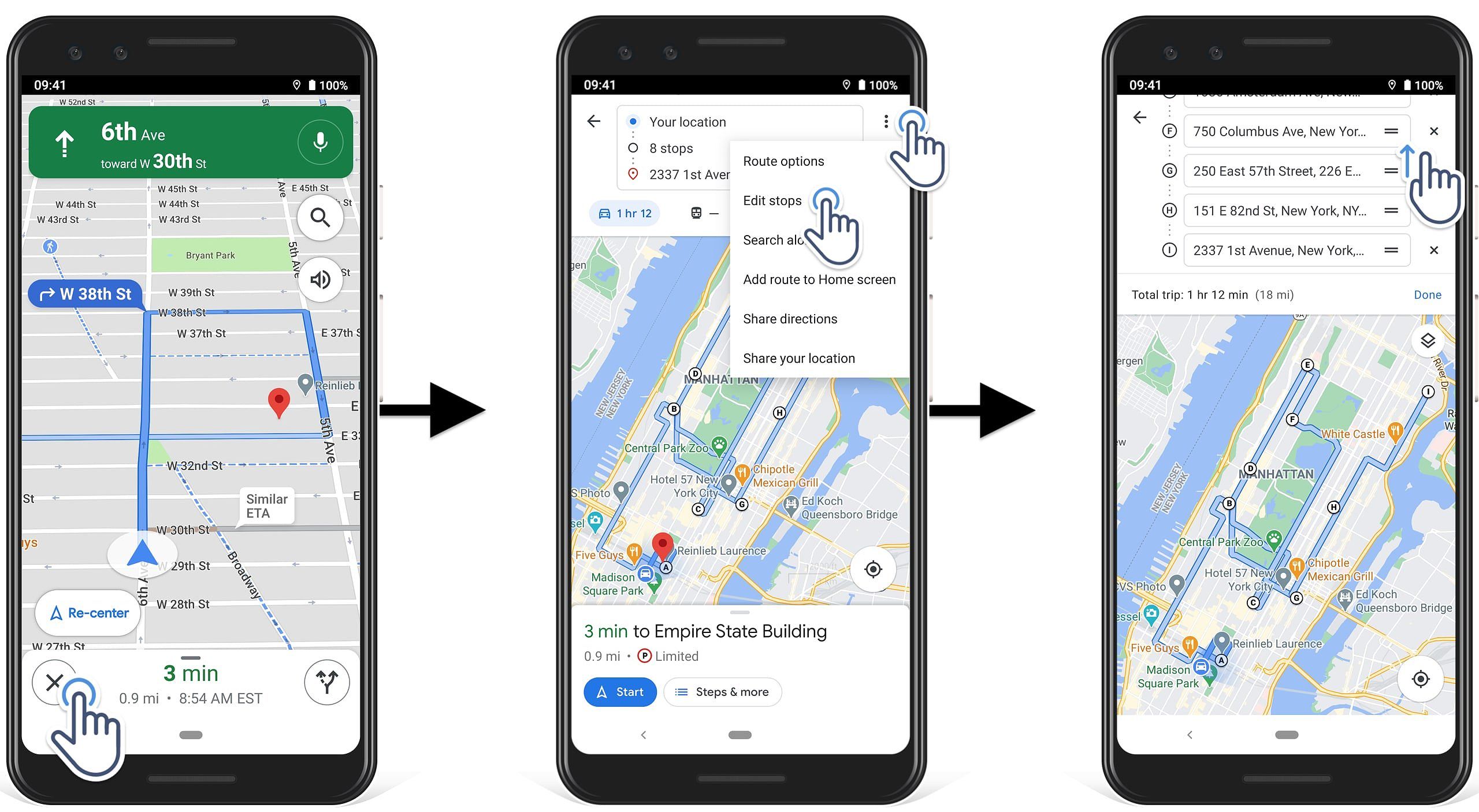
Cost vs- Features Comparison
Evaluate the costs and features of alternative software compared to Google Maps directions. While Google Maps is free, investing in specialized software might yield greater returns for larger operations with complex routing needs.
Emerging Trends in Route Optimization
The world of route optimization is rapidly evolving, and small businesses should stay informed about the latest developments to maintain a competitive edge.
AI-Powered Route Optimization
Many newer route planning apps are leveraging the power of artificial intelligence (AI) and machine learning to predict traffic patterns and adapt routes in real-time more effectively than traditional algorithms. These AI-based solutions can analyze vast amounts of GPS data to identify the most efficient routes, factoring in variables like weather, construction, and historical traffic trends.
Increased Use of GPS Tracking Data
The growing prevalence of GPS-enabled devices has led to the collection of vast troves of location data. Route optimization software is increasingly utilizing this data to refine route predictions, provide real-time updates, and offer advanced features like estimated time of arrival (ETA) notifications.
Advantages of AI-Powered and GPS-Enabled Route Optimization
The adoption of AI-powered and GPS-enabled route optimization tools can provide small businesses with several key benefits:
- Improved Route Accuracy: AI-based algorithms can identify the most efficient routes, factoring in a wider range of variables than traditional mapping services.
- Reduced Fuel Costs: Optimal routes and real-time traffic updates can lead to significant reductions in fuel consumption and associated costs.
- Enhanced Customer Experience : Accurate ETAs and proactive updates on delivery progress can improve customer satisfaction and loyalty.
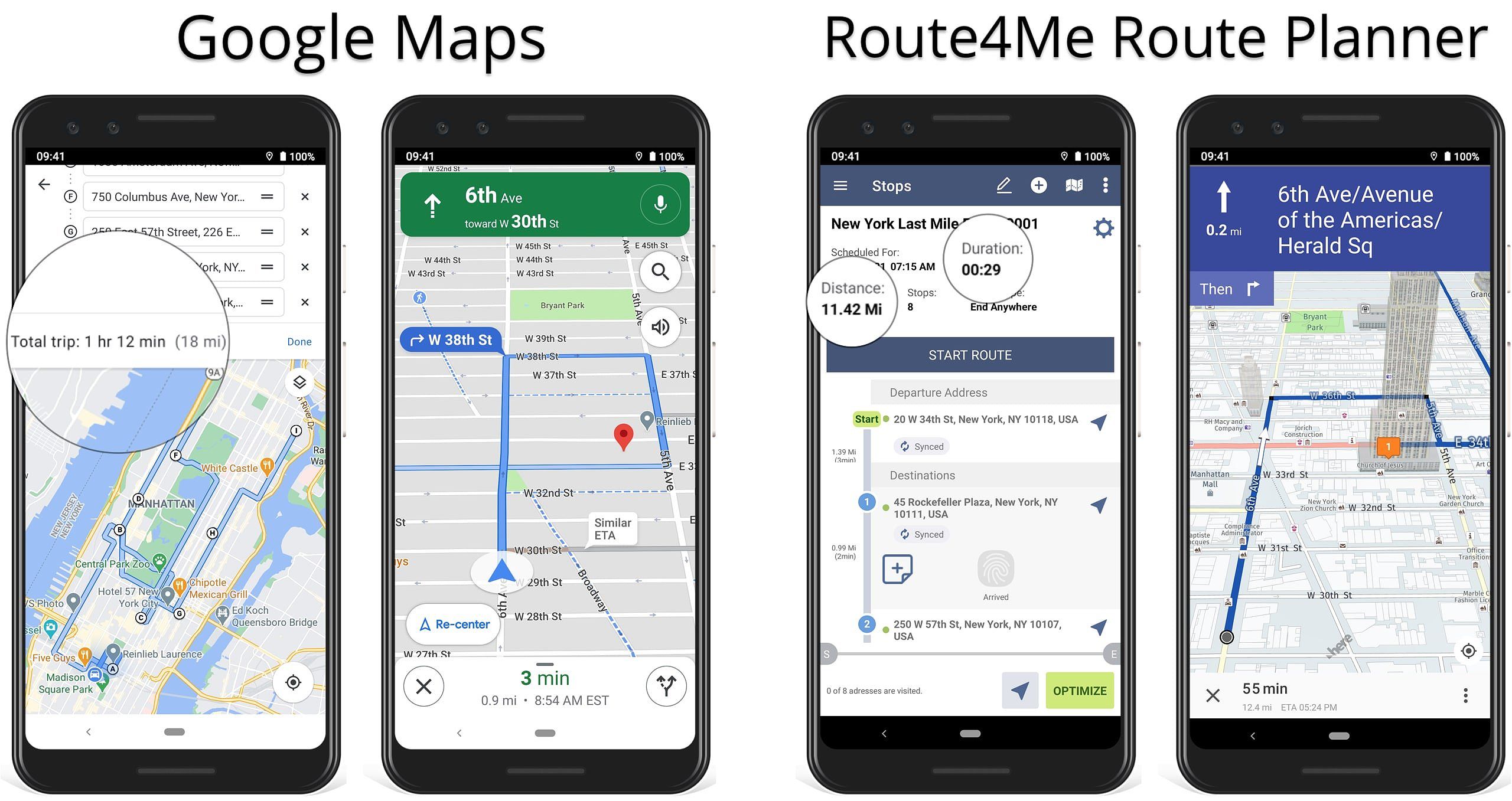
Best Practices for Efficient Route Planning with Google Maps Directions
To maximize your efficiency when using Google Maps directions, consider the following best practices:
- Batch Similar Jobs: Group jobs that are geographically similar to minimize unnecessary driving.
- Strategic Scheduling: Schedule appointments based on route efficiency to further reduce travel time.
- Incorporate Buffer Time: Allow for unexpected delays by building buffer time into your schedule.
- Regular Route Review: Continuously evaluate and update your routes based on feedback and experiences.
Practical Examples
For instance, if you frequently visit the same neighborhoods, take note of which routes work best and adjust your planning accordingly. This practice can lead to significant improvements in efficiency over time.
FAQ
How many stops can I add in Google Maps?
You can add up to 10 stops in a single route on Google Maps.
Can I optimize my route automatically in Google Maps?
Google Maps does not automatically optimize routes. You will need to manually rearrange your stops for maximum efficiency.
What should I do if I encounter an incomplete address?
If you encounter an incomplete address, try searching by the business name or cross-referencing it with other mapping services to find the correct location.
Is there a way to use Google Maps without internet access?
Yes, you can download maps for specific areas before heading out, allowing you to navigate without relying on a mobile data connection.
Case Study: Real-World Success with Google Maps Route Optimization
To illustrate the transformative impact of Google Maps directions, let’s examine a case study of a small business that successfully optimized its operations.
The Business and Its Challenges
John, a field service technician for a local HVAC company, faced significant challenges with inefficient routing. Missed appointments and frustrated customers were common occurrences, negatively impacting his company’s reputation and profitability.
Implementing Google Maps Directions
After adopting Google Maps directions, John implemented several strategies to optimize his routes:
- Accurate Address Input: He ensured all addresses were correctly entered, including relevant landmarks.
- Manual Route Optimization: John carefully rearranged his stops to minimize travel time and backtracking.
- Leveraging Traffic Insights: By avoiding known congestion hotspots during peak hours, John was able to further improve his travel times.
Quantifiable Results
As a result of these changes, John reduced his average daily travel time by 22%. This substantial improvement allowed him to complete an additional three service calls each day, significantly increasing revenue and customer satisfaction.
Key Takeaways
John noted, “Optimizing my routes with Google Maps directions has been a game-changer for my business. The ability to plan efficient routes, avoid traffic bottlenecks, and keep my clients informed has greatly improved my productivity and bottom line.” This case study underscores the importance of careful planning and optimization for small businesses to gain a competitive edge.
Conclusion
Mastering Google Maps directions is a powerful strategy for small businesses seeking to optimize their operations and boost profitability. By accurately inputting addresses, manually optimizing route sequences, leveraging advanced features, and understanding the limitations of Google Maps, you can significantly reduce travel time, fuel costs, and improve customer satisfaction.
For businesses with more complex routing needs that exceed the capabilities of Google Maps, exploring alternative route planning software may be a worthwhile investment. However, for small enterprises with minimal daily stops, the 10-stop limit of Google Maps may still be sufficient, and the cost of advanced software may not be justified.
Regardless of your business size, staying informed about emerging trends in route optimization, such as AI-powered algorithms and GPS-enabled tracking, can provide valuable insights to maintain a competitive edge. By implementing the best practices outlined in this article, you can unlock the full potential of Google Maps directions and take your small business efficiency to new heights.
